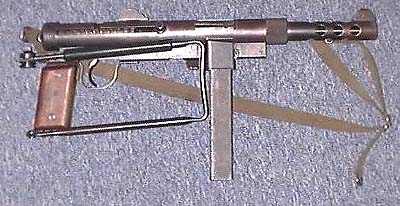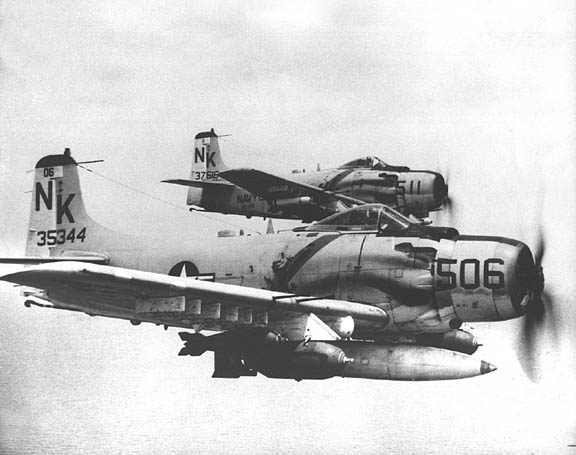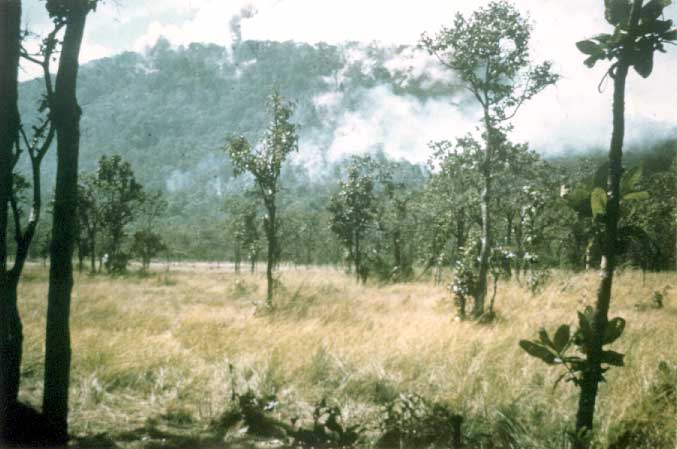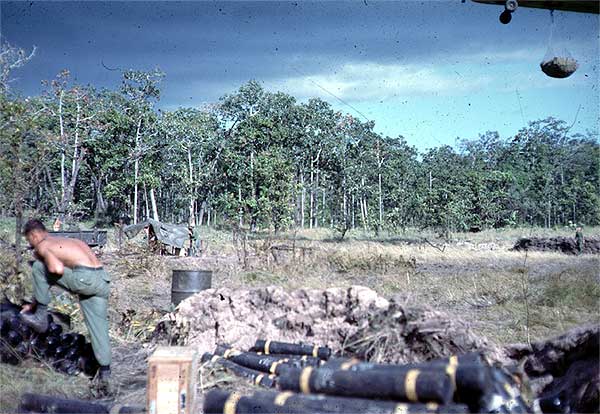Skip to comments.
The FReeper Foxhole Profiles Lt. Col. Harold G.(Hal) Moore - Sep. 6th, 2003
Army Magazine ^
| November 2002
| Col. Cole C. Kingseed, U.S. Army retired
Posted on 09/12/2003 7:27:06 PM PDT by SAMWolf
|

Lord,
Keep our Troops forever in Your care
Give them victory over the enemy...
Grant them a safe and swift return...
Bless those who mourn the lost.
.
FReepers from the Foxhole join in prayer
for all those serving their country at this time.
God Bless America
...................................................................................... ...........................................
|
|
|
|
|
|
|

.
|
U.S. Military History, Current Events and Veterans Issues
 Where Duty, Honor and Country
Where Duty, Honor and Country
are acknowledged, affirmed and commemorated.
|
.

.
| Our Mission: The FReeper Foxhole is dedicated to Veterans of our Nation's military forces and to others who are affected in their relationships with Veterans. In the FReeper Foxhole, Veterans or their family members should feel free to address their specific circumstances or whatever issues concern them in an atmosphere of peace, understanding, brotherhood and support. The FReeper Foxhole hopes to share with it's readers an open forum where we can learn about and discuss military history, military news and other topics of concern or interest to our readers be they Veteran's, Current Duty or anyone interested in what we have to offer. If the Foxhole makes someone appreciate, even a little, what others have sacrificed for us, then it has accomplished one of it's missions. We hope the Foxhole in some small way helps us to remember and honor those who came before us.
To read previous Foxhole threads or
to add the Foxhole to your sidebar,
click on the books below.
|
|
|
|
|
.

.
|
 
.
 Lt. Col. Harold G.(Hal) Moore
Lt. Col. Harold G.(Hal) Moore
(1922 - *)
.
Beyond the Ia Drang Valley
"The will to win, the will to survive, they endure. They are more important than the events that occasion them." -- Vince Lombardi
In his novel of the Battle of Thermopylae, author Steven Pressfield describes a scene in which Dienekes, a Spartan officer, prepares his men for a battle against a numerically superior army of Persians. Watching Dienekes rally and tend to his men, the narrator identifies the essential role of an officer in combat: to prevent those under his command, at all stages of battle -- before, during and after -- from becoming so overcome by terror or anger that emotion usurps dominion of the mind. "To fire their valor when it flagged and rein in their fury when it threatened to take them out of hand" -- that was Dienekes’ job.

COLONEL MOORE AND ENEMY CASUALTY
Two and a half millennia later, a modern Spartan displayed similar attributes of self-restraint and self-composure when Lt. Col. Harold G. (Hal) Moore led the men of the 1st Battalion, 7th Cavalry into the Ia Drang Valley in the Republic of Vietnam in November 1965. Like Dienekes before him, Moore bequeathed a legacy of raw courage and inspirational leadership in war’s darkest crucible. By his own admission, Moore is not a hero, but to his men and to a generation of future officers whom he addressed at the U.S. Military Academy, he is the penultimate battle captain. When actor Mel Gibson and his entourage visited West Point in the spring of 2002 to launch the premier of his movie "We Were Soldiers," the greatest applause was reserved not for Gibson, but for Moore, who quietly slipped away unnoticed during the film’s battle scenes. Not surprisingly, in a recent survey conducted following one of his visits, the majority of cadets identified Moore as the most inspirational officer in their cadet experience.
To a Long Gray Line accustomed to visits by the Army’s most distinguished leaders, why does Moore stand out? The true essence of his popularity within the Corps of Cadets is not limited to his command of American troops in the first pitched battle in the Vietnam War between the U.S. Army and the North Vietnamese Army. Scores of commanders have conducted similar battles and achieved like success. What differentiates Moore from his fellow warriors is his message concerning preparation for battlefield leadership and his own philosophy on the conduct of a leader in battle.
Hal Moore’s road to his status as a cadet icon began in the hills of Kentucky in a small town called Bardstown. Born on February 13, 1922, Moore matriculated to West Point by a circuitous path. Unable to secure an appointment before his graduation from high school, Moore left home in February 1940 and traveled to Washington, D.C., where he hoped his chances to secure a congressional appointment would be enhanced. He completed high school at night and attended George Washington University in the evenings for two years. When Congress doubled the size of the Corps of Cadets in 1942 to meet wartime commitments, Moore finally obtained his appointment from a Georgia congressman. The entire process reinforced Moore’s belief that the first person you must learn to lead is yourself. Set lofty goals and persist until you achieve them.

Lt. Col. Moore and Sgt-Maj. Plumley
Never the best student in the mathematical sciences, Moore struggled, taking refuge in religious activities that further honed his character. His greatest joy in Beast Barracks was firing Expert on the M-1 rifle with the top score in the company. His academic pursuits proved more difficult. In his own words, his first semester at West Point was "an academic trip from hell." Moments of quiet meditation in the Catholic chapel and long hours of study finally paid dividends. As cited in West Point’s yearbook, Hal Moore graduated in 1945 under the curtailed curriculum "untouched by the machinations of the T.D. [Tactical Department] and Academic Departments."
Not surprising to anyone who knew him well, Moore selected Infantry as his branch and joined the 187th Airborne Regiment in Sendai, Japan. The summer of 1948 found 1st Lt. Moore at Fort Bragg, N.C., where he jump-tested experimental parachutes and other airborne gear. By his own calculation, he made upwards of 150 test jumps over the course of the next three years. On his first test jump, however, the parachute hung on the tail of a C-46 and Moore was dragged behind the plane, at 110 miles per hour, 1,500 feet above the drop zone before he could cut it off and use his reserve. The ability to take a few seconds to think under such hazardous conditions would become a hallmark of Moore’s character for the remainder of his military career. The years at Bragg also marked Moore as a quiet professional unfazed by challenges.
In June 1952, Moore, now a husband and father of two children, deployed to Korea. Over the course of the next 14 months, he commanded a rifle company and heavy mortar company in the 17th Infantry, 7th Infantry Division, seeing action in the battles of attrition on Pork Chop Hill, T-Bone, Alligator Jaws and Charlie Outpost. By now Moore was a battle-tested commander. When the armistice was signed in July 1953, he reported to the U.S. Military Academy to teach infantry tactics to aspiring officers. The post-Korean War army also brought Moore to the Pentagon, where he served with distinction in the Air Mobility Division in the office of the Chief of Research and Development, in the Office of the Deputy Chief of Staff for Operations and Plans.

Following graduation from the Naval War College in June 1964, Lt. Col. Moore received a by-name request from Brig. Gen. Harry W. O. Kinnard, commanding general, 11th Air Assault Division (Test), to serve as a battalion commander. Redesignated the 1st Cavalry Division (Airmobile) in July 1965, the division deployed to South Vietnam’s Central Highlands in response to Lyndon Johnson’s escalation of the war. It was in that capacity that Moore’s 1st Battalion, 7th Cavalry fought the first major pitched battle with the North Vietnamese Army (NVA) at Landing Zone X-Ray in the Ia Drang Valley in November 1965.
Moore’s conduct of the battle is well chronicled in his and Joe Galloway’s We Were Soldiers Once. . . and Young and needs little elaboration here. Suffice it to say that the success of Moore’s soldiers in repelling the attack of a well-disciplined enemy force five times their own size was the result of Moore’s battlefield leadership and the indomitable spirit of his men. Moore was first off the lead helicopter and the last soldier to leave the battlefield three days later. Putting everything he had learned at West Point and 20 years of leadership in battle into the action, Moore inflicted over 600 dead on the enemy at a cost of 79 killed and 121 wounded. True to his word, he brought out every one of his troopers. In fact throughout his 32-year career, Hal Moore never abandoned an American soldier on the battlefield.
Following the Ia Drang Battle, Moore was promoted to command the 1st Cavalry Division’s 3rd Brigade that saw action on the Bong Son Plain in January 1966. Subsequent tours of duty included service with the International Security Affairs, Office of the Secretary of Defense; commanding general of the 7th Infantry Division in Korea, and then commanding general of Fort Ord, Calif. Moore ended his career as deputy chief of staff for personnel. When he retired in 1977, he became an executive vice president of the company that developed the ski area at Crested Butte, Colo. Four years later he formed a computer software company. Now in retirement, Moore spends his time with his wife Julie and their family in their homes in Crested Butte, Colo., and Auburn, Ala.

INFANTRY ADVANCING AT LZ X-RAY
Moore’s achievements in a career spanning three decades are legendary. First in his West Point class to be promoted to one, two and three stars, Moore received accelerated promotions on six occasions. Recipient of the Purple Heart and seven awards for battlefield valor, including the Distinguished Service Cross, Moore never lost a man as prisoner or missing in action, which brings us back to West Point and why the Corps of Cadets holds Moore in such high esteem.
|
|
|
|
|
TOPICS: Front Page News; Government; News/Current Events
KEYWORDS: 17cavalry; 1stcavalry; aircav; biography; freeperfoxhole; halmoore; iadrangvalley; michaeldobbs; veterans; vietnam
Navigation: use the links below to view more comments.
first previous 1-20, 21-40, 41-60, 61-80, 81-86 next last
To: ALOHA RONNIE
Thanks for the info on what CSM Plumley and Col. Moore are doing today.
61
posted on
09/12/2003 10:58:52 PM PDT
by
SAMWolf
(The FReeper Foxhole. America's History. America's Soul.)
To: VOA; SAMWolf
...any idea what sub machinegun model that is that Galloway is holding? 
Swedish K
62
posted on
09/12/2003 11:03:10 PM PDT
by
PhilDragoo
(Hitlery: das Butch von Buchenvald)
To: SAMWolf
To: snippy_about_it
Good Night Snippy.
"Cast Your Fate to the Wind" Good song, haven't heard that in a long time.
64
posted on
09/13/2003 12:05:22 AM PDT
by
SAMWolf
(The FReeper Foxhole. America's History. America's Soul.)
To: ALOHA RONNIE
Please accept my respect for your people that didn't make it, we never have enough good men to have any to waste, it would be good if they could be back with us tonight in the flesh instead of the spirit.
The volunteer American fighting man has no peer when well lead and trained by such as General Moore and CSM Plumley. As many enemy fine light infantrymen found out that day.I never saw anything like LZ X-Ray in my time in Viet Nam except in nightmares.
Regards, Paul
65
posted on
09/13/2003 1:07:42 AM PDT
by
Iris7
To: PhilDragoo
BTTT!!!!!!
66
posted on
09/13/2003 3:10:03 AM PDT
by
E.G.C.
To: snippy_about_it
BTTT!!!!!!
67
posted on
09/13/2003 3:10:27 AM PDT
by
E.G.C.
To: snippy_about_it
It sounds as though you guys lost a lot of sleep trying to repost this last night. Thanks for your hard work. Another great thread.
68
posted on
09/13/2003 6:25:39 AM PDT
by
Samwise
(There are other forces at work in this world, Frodo, besides the will of evil.)
To: PhilDragoo; SAMWolf
As usual, I knew freerepublic would have the personal armaments covered.
The Model K looks a bit heavy, but would "take a lickin' and keep on tickin'".
69
posted on
09/13/2003 8:05:32 AM PDT
by
VOA
To: SAMWolf
Especially on John Wayne, Sam Elliott or Robert Duvall
I noted that two helicopter guys who were recounting their being crash in Iraq
also were "accessorized" with the legendary headgear during their interview.
70
posted on
09/13/2003 8:11:27 AM PDT
by
VOA
To: VOA
Nice to see some traditions live on.
71
posted on
09/13/2003 8:47:13 AM PDT
by
SAMWolf
(The FReeper Foxhole. America's History. America's Soul.)
To: snippy_about_it
Please stop by and say hello. Hello, thanks for ping.
Nice job on the thread, as always an enjoyable read.
To: Reaganwuzthebest
Thank you.
To: snippy_about_it
Server gremlins!!!
74
posted on
09/13/2003 4:49:35 PM PDT
by
Darksheare
(One bad night of waking up somewhere new to me, and I'm forever labeled.)
To: Darksheare
LOL. More like server Devils!
To: snippy_about_it
Server devils?
That's more serious.
As long as it doesn't identify itself as Tchernabog, it's not all THAT bad yet.
Just a major annoyance.
Once the server says that it's Tchernabog, it's a catastrophic failure.
76
posted on
09/13/2003 5:53:48 PM PDT
by
Darksheare
(One bad night of waking up somewhere new to me, and I'm forever labeled.)
To: All
BTTT.
To: SAMWolf
Posted by LightSpeed on original Thread;
CAS Bump...Skyraiders!

VC Sappers hit flight line at Bein Hoa

Skyraider in the Idrang

To: SAMWolf
Posted by LightSpeed on original thread;
Reflections from a member of 2/5 in the IA DRANG
November 14-15 Charlie Company, along with the rest of the 2/5 Cav, combat assaulted into a new LZ named Victor, about 3.5 kilometers (clicks, in the vernacular) southwest of LZ X-Ray, where the 1/7 Cav was fighting to stay alive. Their mission was to move overland from LZ Victor to LZ X-Ray and relieve the 1/7 Cav.
At 8:00 AM the morning November, the 2/5 Cav moved out from Victor with Company A and Company B abreast, and C echeloned to the left rear. The march to LZ X-Ray took about four hours and was uneventful, though A Company had some light contact.
Below is a map carried by CPT Boyt during that battle. The reader might wish to print out the map. (Source: Ed Boyt and "Pleiku: The Dawn of Helicopter Warfare in Vietnam" by J. D. Coleman.)
November 14-17
C 2/5 Cav is involved in the famous Ia Drang Valley fight. This was the first major engagement between US Army troops and main force units of the People's Army of Vietnam (known to us as the NVA.) On November 14, 1st Battalion 7th Cavalry air assaulted into LZ X-Ray, adjacent to the Chu Pong Massif near the Cambodian border in II Corps. It ran into the 32nd, 33rd, and 66th Regiments of the NVA. LZ X-Ray became a killing ground, and the 1/7th was almost overrun. During the morning hours of November 15th, C 2/5 Cav, along with the rest of the battalion, marched overland to their aid, closing on LZ X-Ray at noon. Almost immediately , C 2/5 was involved in the rescue of 2nd Platoon, Company A, 1/7th Cav, which had been separated from the rest of the battalion. C 2/5 Cav was commanded by CPT Edward A. Boyt. That night, they formed part of the perimeter around LZ X-Ray. The following morning, they secured the LZ while the 1/7th was extracted. During the morning of November 17th, the 2/5 Cav marched out of LZ X-Ray to clear the way for a B-52 strike on the Chu Pong Massif. The move to LZ Columbus was made with C Company in the lead, and was uneventful. (Sources: "1st Cavalry Division After Action Report Pleiku Campaign", "Pleiku - The Dawn of Helicopter Warfare in Vietnam" - J.
A bomb run by U. S. Air Force fighters on the Chu Pong Massif west of X-Ray. NVA troops were massed on this mountain, and the NVA headquarters was located there as well.

LZ Columbus - most of the artillery was fired from this LZ in support of X-Ray, and C 2/5 Cav marched to Columbus as they left X-Ray. In this picture, a Chinook helicopter is bringing in supplies

To: SAMWolf
I'd just like to say that even though I'm not American, the way you wrote this summary touched me. I am reading Gen. Moore's book 'We were soldiers once... and young' and the way it's written just takes you to LZ X-Ray. It made me decide to join the British military. a decision i will never regret. The world is a safer place because of people like Gen Moore, and I don't think he ever got the gratitude he deserved for the way he fought. I think your admiration of Gen. Moore is portrayed in the way you write, and that alone makes this a well written article. thank you
yours, lianne
Navigation: use the links below to view more comments.
first previous 1-20, 21-40, 41-60, 61-80, 81-86 next last
Disclaimer:
Opinions posted on Free Republic are those of the individual
posters and do not necessarily represent the opinion of Free Republic or its
management. All materials posted herein are protected by copyright law and the
exemption for fair use of copyrighted works.
FreeRepublic.com is powered by software copyright 2000-2008 John Robinson





